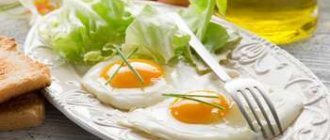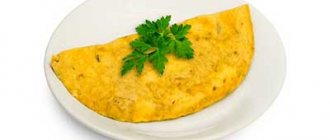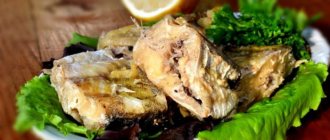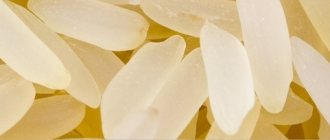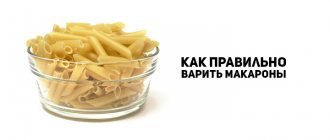Dietary properties:
How many calories are in lecho, what dietary properties it has, all this is of great interest to those who lead a healthy lifestyle and monitor their health and figure. So we will try to answer these questions in the next article.
So here it is:
Lecso is the name given to a concentrated vegetable mixture, a classic dish of Hungarian cuisine, the main ingredients of which are tomatoes, sweet peppers and onions. There are a lot of recipes for its preparation: the ingredients can be raw, boiled, stewed. The structure of the dish is heterogeneous, pieces of vegetables are felt; texture - thick, pasty; color - red or orange; taste - sweetish-sour, hot-spicy; the smell is weak or intense, depending on the spices added. Serve as a condiment, side dish or main dish.
The benefits of lecho are due to its composition. It contains vitamins B, A and C, a number of minerals: iron, magnesium, selenium, zinc, potassium, phosphorus. It should be noted that the caloric content of lecho, as well as the set of nutrients included in it, may vary depending on the composition of the original ingredients of the dish. Lecho is not only beneficial for our body, but also very popular as a tasty vegetable dish.
Classic lecho recipe
Any popular dish, as a rule, has many cooking options. And this is understandable, since every housewife strives to improve the recipe to her taste, giving it individuality and originality.
Traditionally, lecho included only three types of vegetables: tomatoes, sweet peppers and onions, but it could include various additives and seasonings. Therefore, in order to determine how many calories are in tomato and pepper lecho, it is important to know whether sugar and oil were added to it or not. If lecho does not contain these components, then its calorie content will be minimal - about 27 calories per 100 grams of product. Even those who are on a strict diet can afford such a snack, since it does not pose any danger to their figure.
However, it is worth considering that such a cooking recipe is not common, and lecho usually contains a certain amount of butter and sugar. How many calories are in pepper lecho in this case? If you are buying a finished product, the easiest way to find this information is on the label. If this is a homemade dish, then, on average, lecho prepared with the addition of butter will contain 72 calories, and if sugar is added, then 88 calories. As you can see, the calorie content of lecho is still not very high, however, you should not eat kilograms of it.
Other cooking options
In each country, the lecho recipe is adapted depending on the availability of certain products. And this is also the advantage of this dish: almost any vegetables are suitable for its preparation. This is how we traditionally prepare lecho with carrots, and those who like spicy food add hot peppers and garlic.
There are also more original recipes. For example, many people liked the zucchini-based lecho. This is a dietary vegetable, especially useful for those who suffer from edema, and thanks to its delicate fiber, it can be consumed even by people with diseases of the gastrointestinal tract and children. If you are wondering how many calories are in zucchini lecho, then, as a rule, it is not much either: 25 calories in a dish without oil and about 68 calories if oil has been added.
A recipe based on eggplant is also very popular. And although eggplant also has a fairly low calorie content, however, unlike zucchini, its fiber is quite coarse, so if you have gastritis or other stomach problems, eggplants should be consumed with caution. In addition, it is worth refraining from them in the diet of young children. Well, a traditional question for those who are worried about their figure: how many calories are in eggplant lecho? Since eggplant is a low-calorie vegetable, there is no need to worry: on average, 55 calories per 100 grams of dish.
Benefits of lecho
The benefits of lecho lie in the chemical composition of the dish. The lecho contains vitamins C, B, A and C, as well as magnesium, zinc, selenium, potassium, phosphorus and iron. It is interesting that the chemical composition of useful natural compounds, as well as the calorie content of lecho, can change depending on the composition of the original ingredients of the dish. In addition to the invaluable benefits of lecho for human health, the product is considered a tasty vegetable dish that enjoys well-deserved popularity.
In Germany, for example, lecho is used as a side dish for meat dishes and sausages. In Hungary, lecho is considered an independent national dish. Usually lecho is prepared in a large bowl for the whole family. A few minutes before the lecho is ready, add eggs to the vegetables and stir. Hungarian leczo is served with plenty of white bread. This dish is somewhat reminiscent of Swiss Fondue, but instead of cheese they use tasty and healthy lecho.
In order to prepare lecho at home, you will need a simple set of starting ingredients. So, take two kilograms of sweet peppers and tomatoes, a kilogram of onions, vegetable oil, sugar, salt, pepper and other seasonings to taste. Usually black and allspice, as well as bay leaf, are added to lecho. Some housewives prepare lecho with 9% vinegar.
Vegetables should be washed well, the tomatoes should be minced or crushed in a blender. Cut the pepper into strips and the onion into half rings. Then mix the vegetables, add spices and simmer over low heat for about an hour. At the final stage, vinegar is added to the lecho, and then the product is placed in pre-sterilized jars and then covered with lids. A healthy and tasty lecho product is ready for winter.
Calorie content of Lecho. Chemical composition and nutritional value.
Nutritional value and chemical composition of “Lecho”.
The table shows the nutritional content (calories, proteins, fats, carbohydrates, vitamins and minerals) per 100 grams of edible portion.
| Nutrient | Quantity | Norm** | % of the norm in 100 g | % of the norm in 100 kcal | 100% normal |
| Calorie content | 47.1 kcal | 1684 kcal | 2.8% | 5.9% | 3575 g |
| Squirrels | 1.5 g | 76 g | 2% | 4.2% | 5067 g |
| Fats | 0.3 g | 56 g | 0.5% | 1.1% | 18667 |
| Carbohydrates | 10.3 g | 219 g | 4.7% | 10% | 2126 g |
| Alimentary fiber | 1.2 g | 20 g | 6% | 12.7% | 1667 g |
| Water | 91.25 g | 2273 g | 4% | 8.5% | 2491 g |
| Ash | 3.75 g | ~ | |||
| Vitamins | |||||
| Vitamin A, RE | 26 mcg | 900 mcg | 2.9% | 6.2% | 3462 g |
| Vitamin B1, thiamine | 0.025 mg | 1.5 mg | 1.7% | 3.6% | 6000 g |
| Vitamin B2, riboflavin | 0.03 mg | 1.8 mg | 1.7% | 3.6% | 6000 g |
| Vitamin B5, pantothenic | 0.038 mg | 5 mg | 0.8% | 1.7% | 13158 g |
| Vitamin B6, pyridoxine | 0.178 mg | 2 mg | 8.9% | 18.9% | 1124 g |
| Vitamin B9, folates | 16 mcg | 400 mcg | 4% | 8.5% | 2500 g |
| Vitamin C, ascorbic acid | 46.5 mg | 90 mg | 51.7% | 109.8% | 194 g |
| Vitamin RR, NE | 0.55 mg | 20 mg | 2.8% | 5.9% | 3636 g |
| Macronutrients | |||||
| Potassium, K | 146 mg | 2500 mg | 5.8% | 12.3% | 1712 g |
| Calcium, Ca | 41 mg | 1000 mg | 4.1% | 8.7% | 2439 g |
| Magnesium, Mg | 11 mg | 400 mg | 2.8% | 5.9% | 3636 g |
| Sodium, Na | 1369 mg | 1300 mg | 105.3% | 223.6% | 95 g |
| Sera, S | 8 mg | 1000 mg | 0.8% | 1.7% | 12500 g |
| Phosphorus, P | 20 mg | 800 mg | 2.5% | 5.3% | 4000 g |
| Microelements | |||||
| Iron, Fe | 0.8 mg | 18 mg | 4.4% | 9.3% | 2250 g |
| Manganese, Mn | 0.16 mg | 2 mg | 8% | 17% | 1250 g |
| Copper, Cu | 130 mcg | 1000 mcg | 13% | 27.6% | 769 g |
| Selenium, Se | 0.3 mcg | 55 mcg | 0.5% | 1.1% | 18333 g |
| Zinc, Zn | 0.18 mg | 12 mg | 1.5% | 3.2% | 6667 g |
| Essential amino acids | |||||
| Arginine* | 0.038 g | ~ | |||
| Valin | 0.034 g | ~ | |||
| Histidine* | 0.016 g | ~ | |||
| Isoleucine | 0.026 g | ~ | |||
| Leucine | 0.042 g | ~ | |||
| Lysine | 0.036 g | ~ | |||
| Methionine | 0.01 g | ~ | |||
| Threonine | 0.029 g | ~ | |||
| Tryptophan | 0.01 g | ~ | |||
| Phenylalanine | 0.025 g | ~ | |||
| Nonessential amino acids | |||||
| Alanin | 0.033 g | ~ | |||
| Aspartic acid | 0.114 g | ~ | |||
| Glycine | 0.03 g | ~ | |||
| Glutamic acid | 0.106 g | ~ | |||
| Proline | 0.035 g | ~ | |||
| Serin | 0.032 g | ~ | |||
| Tyrosine | 0.017 g | ~ | |||
| Cysteine | 0.015 g | ~ | |||
| Saturated fatty acids | |||||
| Saturated fatty acids | 0.045 g | max 18.7 g | |||
| 14:0 Miristinovaya | 0.001 g | ~ | |||
| 16:0 Palmitinaya | 0.033 g | ~ | |||
| 18:0 Stearic | 0.011 g | ~ | |||
| Monounsaturated fatty acids | 0.02 g | min 16.8 g | 0.1% | 0.2% | |
| 16:1 Palmitoleic | 0.002 g | ~ | |||
| 18:1 Oleic (omega-9) | 0.018 g | ~ | |||
| Polyunsaturated fatty acids | 0.161 g | from 11.2 to 20.6 g | 1.4% | 3% | |
| 18:2 Linolevaya | 0.146 g | ~ | |||
| 18:3 Linolenic | 0.015 g | ~ | |||
| Omega-3 fatty acids | 0.015 g | from 0.9 to 3.7 g | 1.7% | 3.6% | |
| Omega-6 fatty acids | 0.146 g | from 4.7 to 16.8 g | 3.1% | 6.6% |
The energy value of Lecho is 47.1 kcal.
Primary Source: Created in the application by the user. Read more.
** This table shows the average levels of vitamins and minerals for an adult. If you want to know the norms taking into account your gender, age and other factors, then use the “My Healthy Diet” application.
Caloric content per 100 grams of homemade treatment, benefits and harms are analyzed - Good habits
Nutritional value and composition | Vitamins | Minerals
How much does lecho cost (average price for 1 bath)?
Moscow and Moscow region.
60 rub.
Lecho received its original name thanks to the classic dish of Hungarian national cuisine called lecso. It is noteworthy that lecho is popular not only in its historical homeland in Hungary.
European and domestic housewives adopted the lecho recipe a long time ago. In the fall, gardeners and vegetable gardeners harvest a rich harvest of vegetables, which they want to prepare for the winter in order to “recharge” with vitamins and beneficial natural compounds from them during the cold season.
Lecho is a great way to prepare fresh vegetables for future use.
Lecho as a main dish
The recipes listed above include exclusively vegetables, so it is quite difficult to get enough of this dish, although very tasty. However, there are options for lecho that can be consumed as an independent dish without fear of going hungry.
For example, lecho with rice is a complete vegetarian dish that can be eaten immediately after cooking or used as a preparation for the winter.
How many calories are in lecho with rice depends on how much rice you added during the cooking process, since it is a fairly high-calorie product.
If you are not zealous in this matter, the calorie content of the dish will be only 110 calories, which is not much for such a tasty and nutritious product.
Another way to turn lecho into a very filling meal is to add beans. In terms of the amount of protein, such a dish can compete even with meat products. And if you haven’t gone overboard with the amount of beans, then you don’t have to worry about how many calories are in lecho with beans. Usually no more than 95-100 per 100 grams.
The imagination of housewives is not limited to the listed types of lecho: there are recipes with the addition of potatoes, cucumbers, mushrooms, ginger, herbs and even chicken eggs or meat.
Therefore, there is simply no single answer to the question: how many calories are in homemade lecho; it is important to take into account the composition and quantity of ingredients included in it. In any case, given the variety of recipes, you can always prepare a dish to suit your taste.
And, of course, there is no point in giving up such a beloved and healthy product if you are on a diet. It will perfectly decorate both an everyday lunch and any holiday feast.
Jars and jars, small and large, glass and iron, beckon with delicious tomatoes, cucumbers, green peas... Is what is hidden in colorful packaging really that useful? Do we always pay attention to the label, which contains information about the product? In this article we will talk about lecho: calorie content, composition, origin of the recipe.
Harm treatment
Considering the harm of lecho, it should be noted that the product has many contraindications. So many components of the dish are strong allergens and can cause rashes and swelling.
Source: https://vkusnota24.ru/produkty-pitaniya/kalorijnost-lecho.html
History with taste
This is a classic dish of Hungarian cuisine. It is quite popular, throughout Europe. Translated, “lecsó” means ratatouille. As a matter of fact, this is the famous French ratatouille, only in the Hungarian variation. The dish is prepared from a variety of vegetables, so it is not surprising that there are a lot of variations in preparation. The only thing that remains unchanged is the content of the three main components: tomatoes, bell peppers and onions. The most interesting thing is that in its homeland the dish is not a salad, but a sauce.
In recent years, the classic recipe has been slightly modified in Hungary. Pieces of smoked meat, homemade or boiled sausage began to be added to lecho, and beaten eggs were added to the finished dish. The recipe has also undergone dramatic changes in Russia. In addition, it was improved so that it was possible to preserve a tasty dish for the winter. Lecho is served both as a side dish for meat and as a separate dish.
